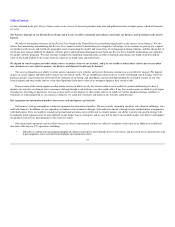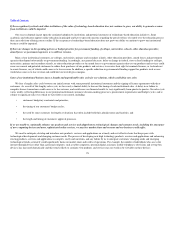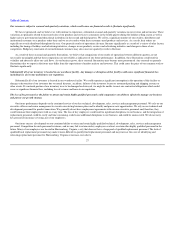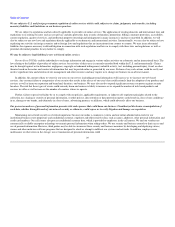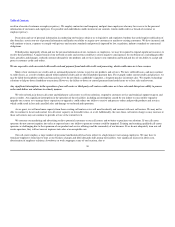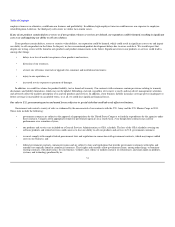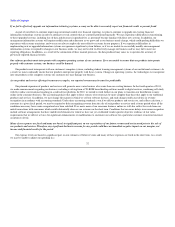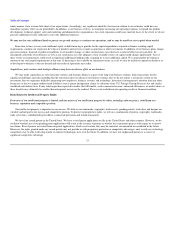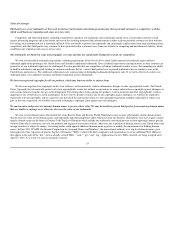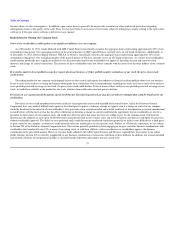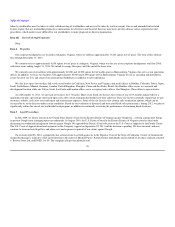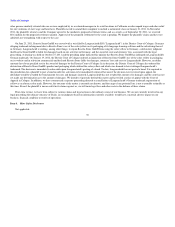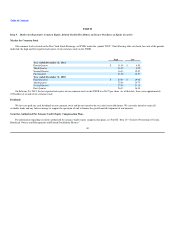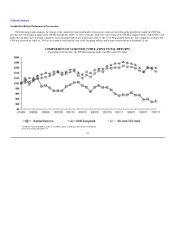Rosetta Stone 2011 Annual Report Download - page 34
Download and view the complete annual report
Please find page 34 of the 2011 Rosetta Stone annual report below. You can navigate through the pages in the report by either clicking on the pages listed below, or by using the keyword search tool below to find specific information within the annual report.
Table of Contents
If we fail to effectively upgrade our information technology systems, we may not be able to accurately report our financial results or prevent fraud.
As part of our efforts to continue improving our internal control over financial reporting, we plan to continue to upgrade our existing financial
information technology systems in order to automate several controls that are currently performed manually. We may experience difficulties in transitioning
to these upgraded systems, including loss of data and decreases in productivity, as personnel become familiar with these new systems. In addition, our
management information systems will require modification and refinement as we grow and as our business needs change, which could prolong difficulties we
experience with systems transitions, and we may not always employ the most effective systems for our purposes. If we experience difficulties in
implementing new or upgraded information systems or experience significant system failures, or if we are unable to successfully modify our management
information systems or respond to changes in our business needs, we may not be able to effectively manage our business and we may fail to meet our
reporting obligations. In addition, as a result of the automation of these manual processes, the data produced may cause us to question the accuracy of
previously reported financial results.
Our software products must interoperate with computer operating systems of our customers. If we are unable to ensure that our products interoperate
properly with customer systems, our business could be harmed.
Our products must interoperate with our customers' computer systems, including student learning management systems of our institutional customers. As
a result, we must continually ensure that our products interoperate properly with these systems. Changes in operating systems, the technologies we incorporate
into our products or the computer systems our customers use may damage our business.
As our product and service offerings become more complex, our reported revenue may become less predictable.
Our planned expansion of products and services will generate more varied sources of revenue than our existing business. In the fourth quarter of 2011,
we made announcements regarding our business, including evolving from a CD-ROM based desktop software model to digital services, combining self-study
with live online conversational coaching in a multi-device platform. In 2012, we intend to work further on our plans to transition our distribution to more
online in the consumer business. The accounting policies that apply to these sources of revenue may be more complex than those that apply to our traditional
products and services. In addition, we may change the manner in which we sell our software licenses, and such change could cause delays in revenue
recognition in accordance with accounting standards. Under these accounting standards, even if we deliver products and services to, and collect cash from, a
customer in a given fiscal period, we may be required to defer recognizing revenue from the sale of such product or service until a future period when all the
conditions necessary for revenue recognition have been satisfied. If we move more of our consumer business online we will also collect less cash from our
initial transactions with consumers which could substantially decrease our revenues in the short term. Conditions that can cause delays in revenue recognition
include software arrangements that have undelivered elements for which we have not yet established vendor specific objective evidence of fair value,
requirements that we deliver services for significant enhancements or modifications to customize our software for a particular customer or material customer
acceptance criteria.
Many of our expenses are fixed and many are based, in significant part, on our expectations of our future revenue and are incurred prior to the sale of
our products and services. Therefore, any significant decline in revenue for any period could have an immediate negative impact on our margins, net
income and financial results for the period.
Our expense levels are based, in significant part, on our estimates of future revenue and many of these expenses are fixed in the short term. As a result,
we may be unable to adjust our spending in a
32



